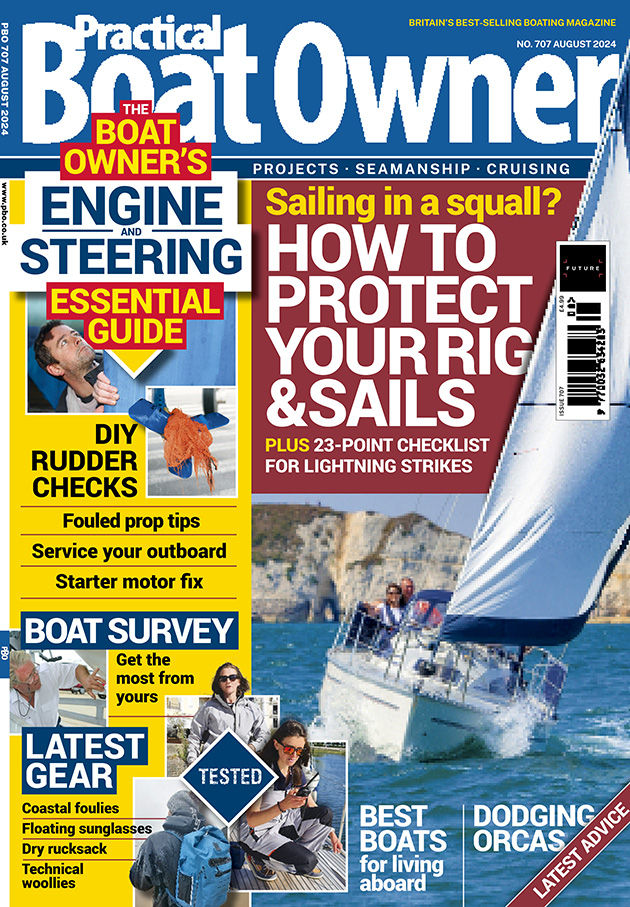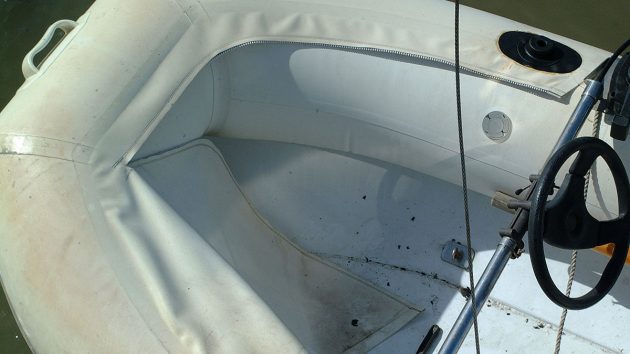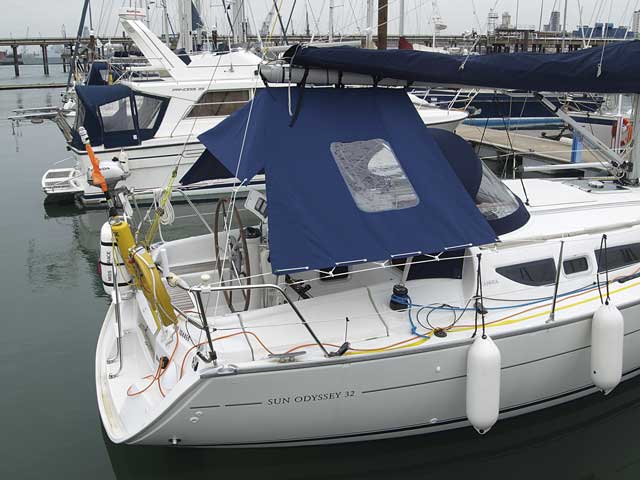Tony Davies demonstrates how you can restore a broken heavy-duty zip to full working condition
When a heavy-duty zip breaks, for example on a cockpit canopy or inflatable bow dodger, it is not the cost of the zip that breaks the bank but the expense of having the old one removed and the new one sewn in.
If the only part that has broken is the carriage that zips it up, it is often possible to get a replacement and fit it yourself.
Heavy-duty zips for marine use often have nylon or plastic carriages (the moving part that zips it together), and over time these can deteriorate or simply break due to heavy-handed use.
This happened to the zip on the bow dodger of my tender.
One day the carriage simply fell apart and disappeared over the side, leaving the bow dodger flapping loose.
The track of the zip was in perfect condition, so it would have been very annoying to have to replace it completely.

Once completed, the bow dodger was zipped up and is now as good as new again. Credit: Tony Davies
The choice then was to either fit press studs to hold the dodger in place, remove the old zip and sew a new one by hand, get an upholsterer to do the job properly or try to obtain a replacement carriage.
After looking on the internet I found Kayospruce Ltd, a UK zip specialist which supplies the marine industry worldwide.
I thought it would be worth a phone call, and straight away found them to be extremely helpful.
I described the zip and where it had been sourced (in this case in Australia, as that was where the tender came from).
I was quite surprised when I was told that it could very likely be one of their zips as they supply boatbuilders down under!
One thing I didn’t know was that there are only a few different types and sizes of zip in common use and that it is not as difficult as it may at first seem to find a matching part.
I described the size and type, and Kayospruce Ltd sent me the most likely version, with a proviso that I could return it if it was the wrong one.
How the heavy-duty zip was mended

1. The first part of fitting the carriage was to cut a few teeth out of the track as close to the closed end as possible so as to be able to run the carriage onto the track.

2. The cut was staggered between the sides of the track so that the carriage could be run onto one side first, with the other side of the track being fed in afterwards.

3. This was when it was possible to see if the carriage would work with the original track. The track closed perfectly, showing that the carriage was indeed the correct one.

4. Next, the cut area of the track was closed off so the carriage couldn’t run off the track each time it was opened. (The track was hand-sewn closed using Terylene thread.)

5. The finished stitching is neat and unobtrusive. The heavy-duty zip now works!
Continues below…
Best inflatable boat: 9 compact tenders put to the test
Inflatables are everywhere: paddleboards, canoes, kayaks, tents, kites and wings – and inflatable boat technology has long been a practical…
Sail repair – how to extend the life of your mainsail
After 24,000 miles – including three visits to the Azores, racing round Britain and Ireland and a foray into the…
How to repair a sail – video guide
Fixing a tear A big tear in the body of the sail looks dramatic but is easy to fix. Don’t…
Make a boom tent for your cockpit
Bob Goode shows how you can increase your accommodation by making a custom boom tent
For more boating news, features and expert advice, take out a PBO subscription

A subscription to Practical Boat Owner magazine costs around 40% less than the cover price.
Print and digital editions are available through Magazines Direct – where you can also find the latest deals.
PBO is packed with information to help you get the most from boat ownership – whether sail or power.
-
-
-
- Take your DIY skills to the next level with trusted advice on boat maintenance and repairs
- Impartial in-depth gear reviews
- Practical cruising tips for making the most of your time afloat
-
-
Follow us on Facebook, Instagram, TikTok and Twitter








